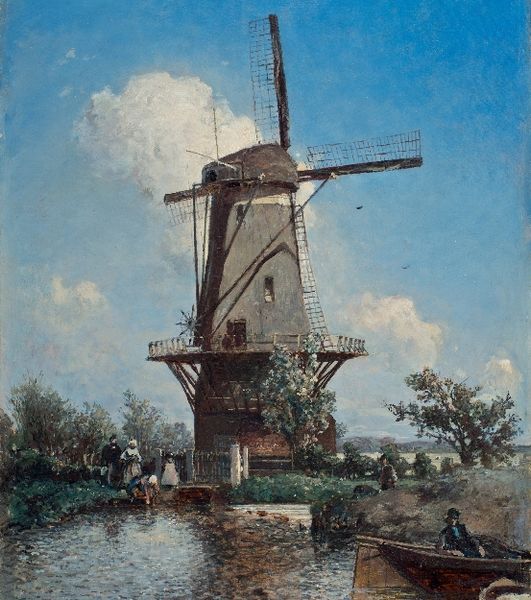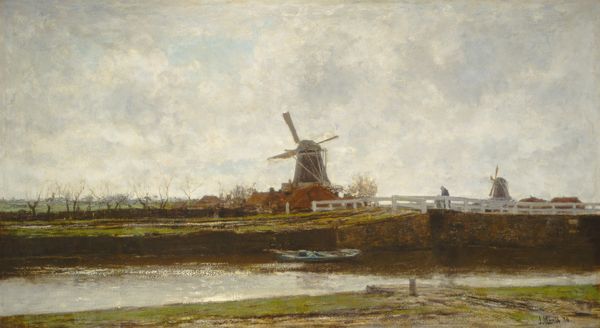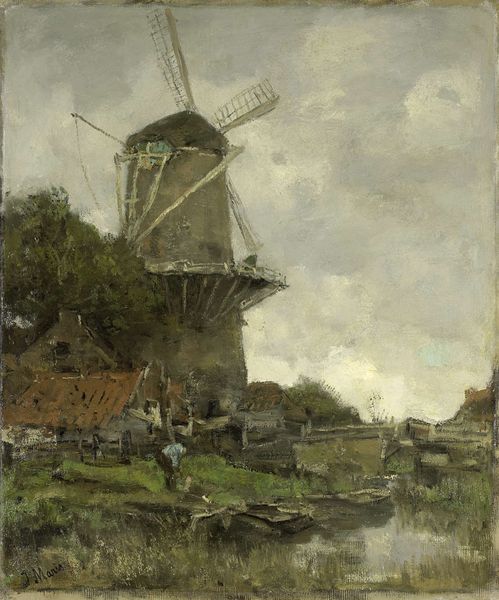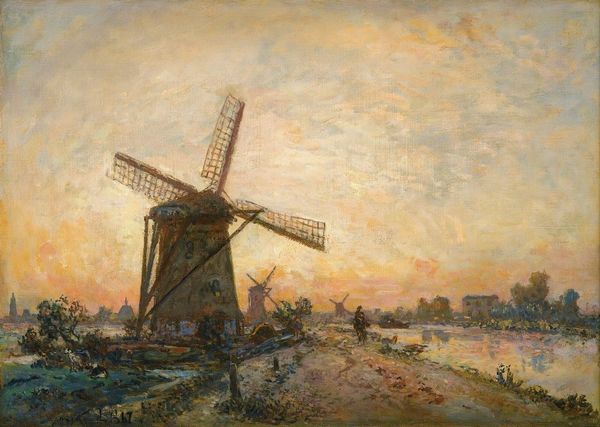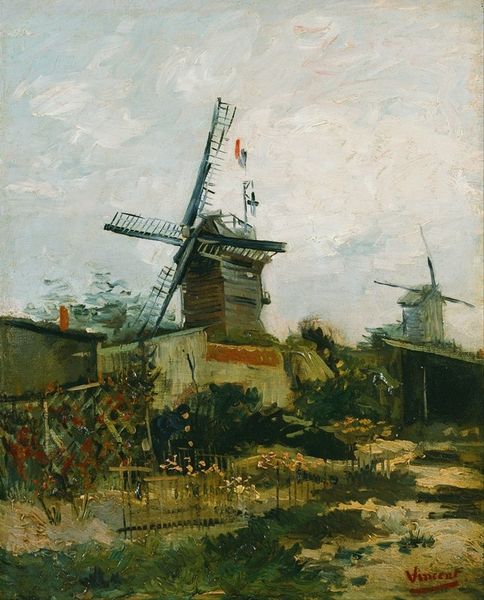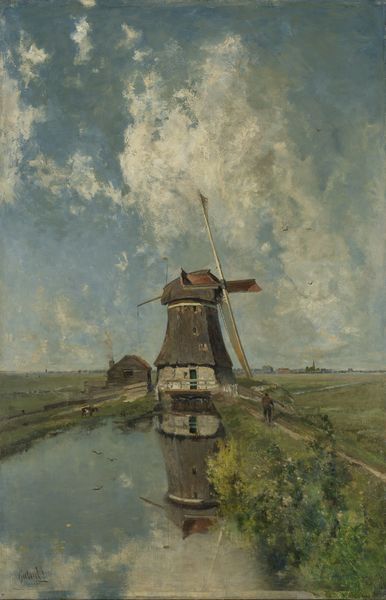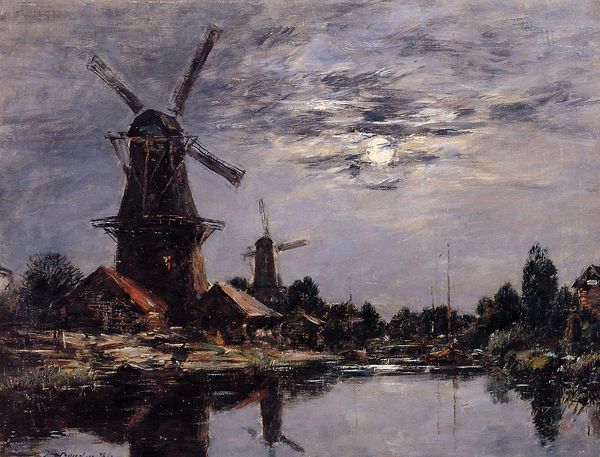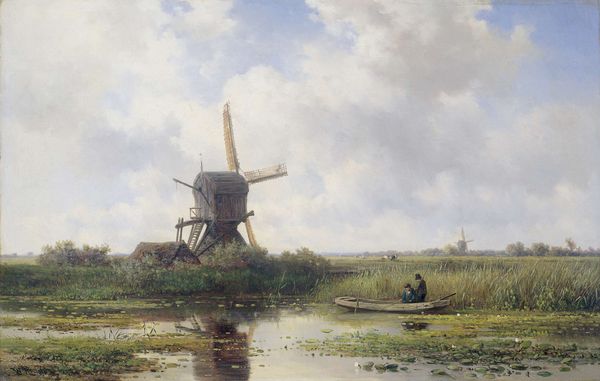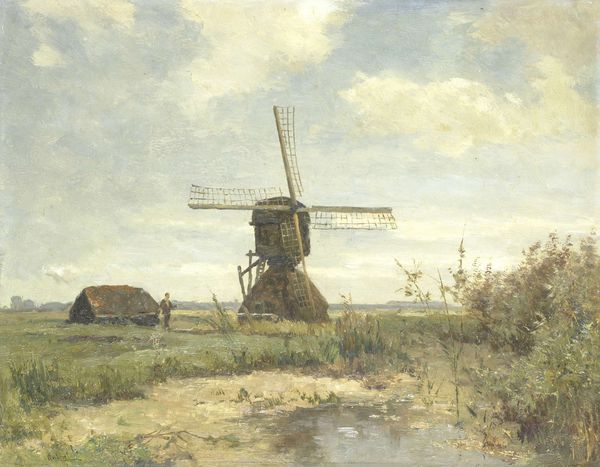
Copyright: Public Domain: Artvee
Curator: Looking at this image, my first thought is: atmospheric. The colors, even muted, seem to hum with an unseen energy. Editor: And I am immediately struck by the clear materiality of this work—it’s oil paint, yes, and you can practically smell the linseed. The thick application gives a wonderful texture, really bringing the scene to life. This is Johan Barthold Jongkind’s "Windmills near Rotterdam", painted in 1857. Curator: The windmills immediately speak of Dutch ingenuity, transforming landscape through engineering. There’s a persistent visual narrative of humankind harnessing the natural elements—wind and water in tandem. It’s so very archetypal. Editor: Right, these windmills served a very material function, like land drainage or grinding grain. And looking at Jongkind's application of paint here, particularly around the base of the dominant mill, one can almost feel the weight of the structure, and the human labor required to maintain it. I wonder what kind of pigments he used to achieve those earthy tones. Curator: Beyond their functional role, consider windmills as cultural totems: persistent, silent observers of the human drama playing out below. I get a profound sense of stillness in the painting—that golden light always conveys such serenity. Editor: Though, it wasn't such a quiet existence back then—imagine the constant noise and vibration from the turning millstones. You get a sense for that activity looking closely at how Jongkind plays with shadow to represent the sails turning in the wind. Curator: The other, smaller human figures only accentuate this timeless dialogue with the landscape, with people always on the move... The artist places people at rest and labor, almost superimposed across eras. Editor: I completely agree. You can trace all of those details, seeing the connection of artistic skill with daily working life—those two boatmen seem small, yes, but very intentionally painted. Curator: For me, it highlights the delicate equilibrium, then as now, between human enterprise and natural forces, constantly shaping each other’s destinies. I think what the painting presents has stuck with us for so long due to those thematic concerns that touch upon enduring conditions, concerns, and desires. Editor: This was quite interesting. Now seeing Jongkind's hand so deftly move with the concerns of a culture deeply engaged with its own landscape has revealed far more about materiality. I want to look deeper and connect further.
Comments
No comments
Be the first to comment and join the conversation on the ultimate creative platform.
